
Waves be damned, it was going where he pointed it, urged on by its 550 hp Cummins QSB 6.7L diesel. The experience made us think about how the boat's structure withstood the combined pressures of the Seakeeper, the powertrain, and the Chesapeake Bay water through which we were traveling. There were multiple forces working on the four bolts holding the Seakeeper in its bed, as well as the hull structures of which the bed was part.
So, how do a naval architect, an engineer and a boatbuilder spread out those forces so the Seakeeper doesn't simply rip itself loose in the boat's bilge?
We asked our friend Lou Codega, a naval architect perhaps best known for designing Regulator Boats. "The gyro guys are very good at giving us the loads in multiple axes," Codega says. "And you have to design for all of them at once. They're huge, massive forces-big numbers, hundreds or thousands of pounds."
Diese Geschichte stammt aus der March 2023-Ausgabe von Boating.
Starten Sie Ihre 7-tägige kostenlose Testversion von Magzter GOLD, um auf Tausende kuratierte Premium-Storys sowie über 8.000 Zeitschriften und Zeitungen zuzugreifen.
Bereits Abonnent ? Anmelden
Diese Geschichte stammt aus der March 2023-Ausgabe von Boating.
Starten Sie Ihre 7-tägige kostenlose Testversion von Magzter GOLD, um auf Tausende kuratierte Premium-Storys sowie über 8.000 Zeitschriften und Zeitungen zuzugreifen.
Bereits Abonnent? Anmelden

AFFORDABLE SATCOM
Communications devices using satellite technology are more abundant today than any time in the past. What's more, many are portable, ultra-compact, affordable relatively and designed for boating, dispelling any perceptions that you need a big, expensive dome antenna aloft to access satellite communications.

IN THE BEGINNING
REPOWERING FOUNTAIN HULL NO.1
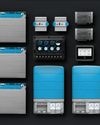
NAVICO GROUP FATHOM 2.0
Engine charging at 48 volts could be a game-changer.
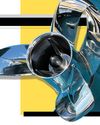
PROPS FOR INNOVATION
Sharrow MX3 propellers live up to most of the company's performance-improvement claims.
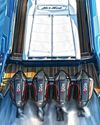
MERCURY RACING 500R
Supercharged power for a variety of boats.

FLIPPING THE SWITCH
Much reporting focuses on reasons why one might choose electric marine power. The issues of range, speed, noise levels, winterizing and ethanol challenges, lake restrictions, environmental concerns and more all must be resolved on an individual basis. Little gets said about how a boater choosing to repower with electric actually gets that accomplished. Is it DIY? And if not, how does it get done?

TOW-VEHICLE TECH
If it's been a while since you bought new tow vehicle, you might be surprised by the many built-in advancements in trailering technology. New tow tech ranges from integrated weight scales and adaptive suspensions to systems that automatically back up your truck to hitch up your trailer. Here are a few examples to look for. -Jim Hendricks

MONUMENTAL TIPS FOR BACKING A TRAILER
Three Boating greats offer advice for a perennial reader query.
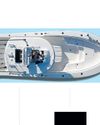
STICKING POINTS - Anchoring alternatives, and why you will always need a traditional anchor.
My brother-in-law likes to fish offshore reefs, and the process once entailed navigating to a mark, dropping a float, and idling upwind or up-current to drop the anchor in hopes the set would drop us back to the float.
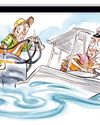
FOR WANT OF A CLAMP
When 100 miles from shore, home and help, this boater’s preparedness prevented potential catastrophe.